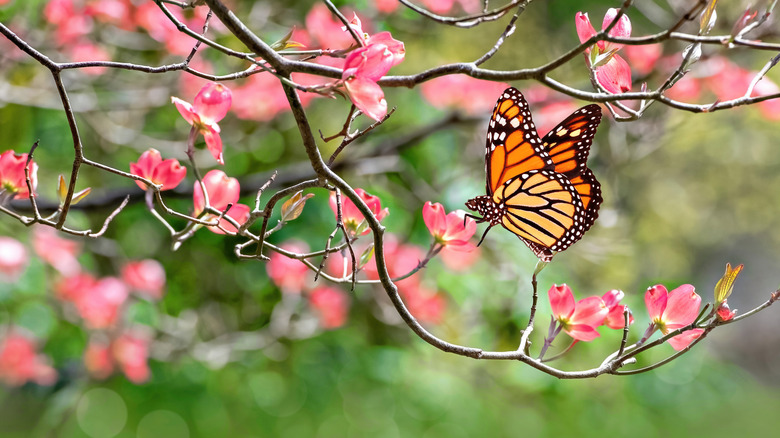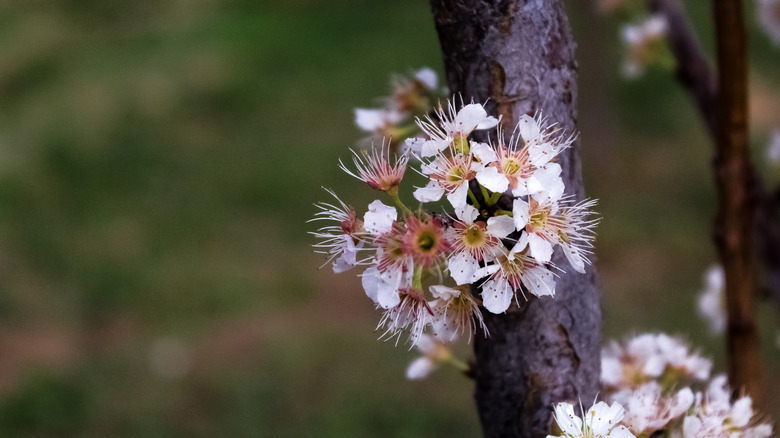Plant One Shady Flowering Tree To Enjoy A Garden Full Of Birds & Butterflies
If you're looking for an easy way to fill your garden with pollinator-friendly flowers or plants, you've no doubt run into the usual suspects — hydrangeas, milkweed, and sunflowers. But it seems that there aren't as many trees that fit the right descriptions. However, there's one flowering tree that instantly invites butterflies and birds to your garden, and it is quite shady: The Mexican plum tree (Prunus mexicana). These vibrant trees burst with spring blossoms that attract a wide range of pollinators, and their fruit will bring the birds soon after. Whether you're working with an expansive backyard or a smaller outdoor space, the plum tree makes a strong case to be the next addition to your garden — and it starts showing results in just a few seasons.
What makes Mexican plum trees especially appealing is their adaptability. They are native to the United States and typically thrive in USDA Zones 6 through 8. These trees require little more than a sunny spot and well-draining soil to flourish. The Mexican plum blooms with white fragrant flowers around February, March, or April, usually before any leaves begin to show on your tree. These nectar-rich flowers support native pollinator populations while providing stunning springtime blossoms that bring a bit of early color to your yard. You'll often see growth rates of 1 foot per year, with some cultivators managing to achieve full maturity in five years. Their smaller size makes them perfect for smaller yards or compact spaces that would be overwhelmed by larger fruit-bearing trees. If you've been dreaming of a yard that hums with life, one with lively birds and fluttering butterflies, this just might be the next addition to your outdoor garden.
How to care for your Mexican plum tree
Once you've planted your Mexican plum tree, giving it the right care will ensure it stays healthy and productive year after year. Start by choosing a location that gets full sun for most of the day, which helps boost both flowering and fruiting. When planting, dig a hole that's slightly wider than the root ball, and mix in compost or organic matter to give the tree a nourishing start. Young trees develop from deep watering a few times a week, particularly in the first couple of growing seasons. Be careful not to overwater your young tree, as they are a drought-tolerant species.
Pruning is another important aspect of caring for your plum tree. In late winter or early spring, before new growth begins, trim back dead, damaged, or crossing limbs to improve air circulation and light penetration. This helps to reduce disease and encourages better blooms on of your tree. One of the easiest mistakes that everyone makes when growing a fruit tree is over-pruning their plants. Only get rid of branches that aren't thriving so that you don't damage the plant's ability to absorb sunlight. You may also need to thin the developing plums early in the summer to prevent branches from getting overburdened by the weight. Some varieties of these trees are self-pollinating, while others may need a second tree nearby. You should check the requirements of each tree that you plant to ensure you get fruit each year. With a few simple care tips, you can quickly transform this simple plum tree into a haven for pollinators.

